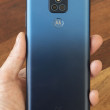GSM
Global System for Mobile Communication.
GSM was the dominant 2G digital mobile phone standard for most of the world. It determines the way in which mobile phones communicate with the land-based network of towers.
GSM was one of two major mobile phone technologies in the U.S. The other was CDMA. AT&T and T-Mobile used GSM. Sprint and Verizon used CDMA. GSM was more prevalent in most other parts of the world, and especially in Europe.
Although GSM and CDMA provide similar basic features and services to end-users, (such as voice calling, text messaging, and data services,) they operate very differently at many technical levels. This makes GSM phones completely incompatible with CDMA networks, and vice-versa.
The most visible feature of GSM are SIM cards. SIM cards are removable, thumbnail-sized smart cards which identify the user on the network, and can also store information such as phone book entries. SIM cards allows users to switch phones by simply moving their SIM card from one phone to the other.
For information about GSM-related 2.5G and 3G technology:
See: GPRS
See: EDGE
See: WCDMA



